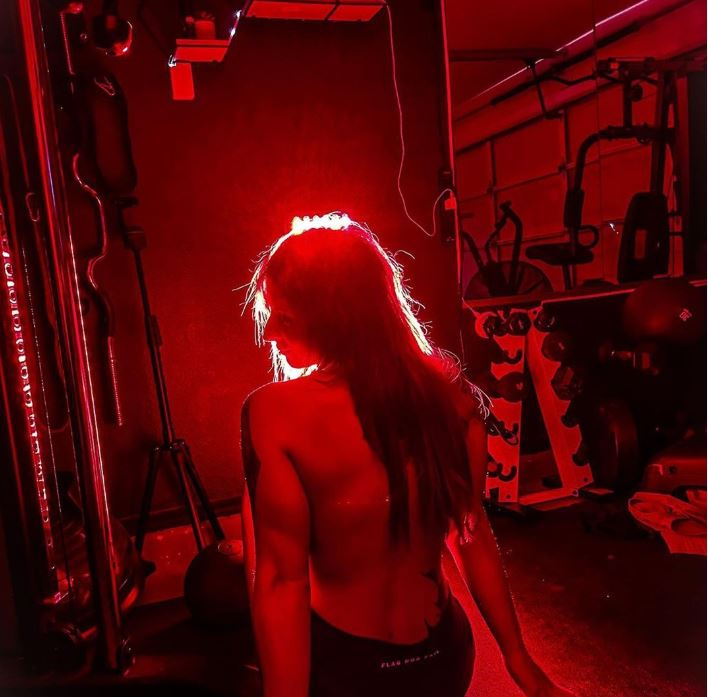![]() Free Shipping
Free Shipping ![]() Buy Now, Pay Later
Buy Now, Pay Later ![]() Eligible
Eligible
Can Athletes Use Red Light Therapy to Improve Tendon Performance?

Tendons are the unsung heroes of athletic performance. These tough, fibrous tissues connect muscles to bones, enabling movement, power, and agility. But unlike muscles, tendons have limited blood supply, making them slower to heal and more prone to chronic injuries. For athletes, tendon issues—such as tendinitis, tendinopathy, or tears—can mean weeks or even months of recovery.
Enter red light therapy (RLT), a non-invasive treatment gaining traction in sports medicine. Could this futuristic-sounding technology be the key to faster tendon repair, reduced inflammation, and enhanced performance? Let’s dive into the science, the benefits, and whether athletes should consider adding RLT to their recovery toolkit.
What Is Red Light Therapy?
Red light therapy, also known as low-level laser therapy (LLLT) or photobiomodulation (PBM), uses specific wavelengths of red and near-infrared (NIR) light to penetrate the skin and stimulate cellular repair. Unlike UV light, which damages cells, red and NIR light enhance mitochondrial function, boosting ATP (energy) production and accelerating tissue healing.
How Does It Work on Tendons?
Tendons are dense and poorly vascularized, meaning they don’t receive as much oxygen and nutrients as muscles. This makes them slow to heal. RLT appears to help by:
- Increasing Collagen Production – Collagen is the primary structural protein in tendons. Studies show that RLT can stimulate fibroblast activity, leading to stronger, more resilient tendons.
- Reducing Inflammation – Chronic tendon injuries often involve inflammation. RLT has been shown to decrease pro-inflammatory cytokines, easing pain and swelling.
- Enhancing Blood Flow – While tendons have limited blood vessels, RLT may improve microcirculation, delivering more oxygen and nutrients to damaged areas.
- Speeding Recovery – Athletes using RLT report faster recovery times from tendon injuries, allowing them to return to training sooner.
VELLGUS Elite V2
THE #1 RATED RED LIGHT DEVICE
VELLGUS pro V2
THE #1 RATED FULL BODY RED LIGHT DEVICE
Scientific Evidence: Does RLT Really Help Tendons?
Several studies support the use of RLT for tendon health:
- A 2016 study in the Journal of Athletic Training found that red light therapy significantly improved healing in Achilles tendinopathy compared to placebo.
- A 2018 meta-analysis in the American Journal of Physical Medicine & Rehabilitation concluded that LLLT was effective in reducing pain and improving function in chronic tendon injuries.
- A 2020 study on rotator cuff injuries showed that athletes treated with RLT had better collagen alignment and faster recovery than the control group.
However, not all studies show dramatic results. Some suggest that the effects depend on the wavelength, dosage, and treatment frequency. For best results, consistent use is key.
How Athletes Are Using Red Light Therapy for Tendons
Professional and amateur athletes alike are incorporating RLT into their routines in several ways:
1. Injury Recovery
Athletes with tendon injuries (e.g., tennis elbow, jumper’s knee, Achilles tendinitis) use RLT to reduce downtime. NFL players, NBA stars, and Olympians have been spotted using devices like Joovv, Rouge, or Therabody’s RecoveryFlex.
2. Pre-Workout Warm-Up
Some athletes use RLT before training to increase blood flow and prime tendons for intense activity, potentially reducing injury risk.
3. Post-Workout Recovery
After heavy training, tendons undergo microtears. RLT may help speed up repair, reducing soreness and stiffness.
4. Long-Term Tendon Health
Even without acute injuries, athletes use RLT to maintain tendon elasticity and prevent degeneration over time.
How to Use Red Light Therapy for Tendons
If you’re considering RLT, here’s how to maximize benefits:
- Wavelength: 600–850 nm (red to near-infrared) is most effective for deep tissue penetration.
- Dosage: 5–20 minutes per session, 3–5 times per week for chronic issues.
- Device Options:
- Handheld devices (for targeted treatment)
- Full-body panels (for larger areas)
- Wearable wraps (for convenience)
Pro Tip: Combine RLT with eccentric loading exercises (like heel drops for Achilles rehab) for even better results.
Potential Limitations and Considerations
While promising, RLT isn’t a magic bullet:
- Results vary—some athletes see dramatic improvements, others notice subtle changes.
- Consistency is key—one session won’t heal a chronic injury.
- Not a substitute for rehab—strength training and proper load management are still essential.
Final Verdict: Should Athletes Try RLT for Tendon Health?
The evidence suggests yes—red light therapy can be a valuable tool for tendon repair, inflammation reduction, and performance optimization. While it won’t replace traditional rehab, it offers a safe, drug-free, and non-invasive way to support tendon health.
For athletes looking to gain an edge, RLT could be the missing piece in their recovery protocol. Whether you’re a weekend warrior or a professional competitor, this cutting-edge treatment might just keep your tendons—and your performance—at their peak.








